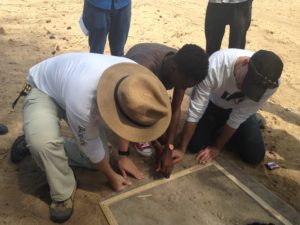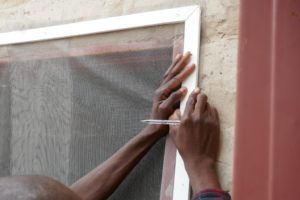Namibia has made remarkable headway in its push against malaria – between 2005 and 2015, reported incidence of malaria in the country dropped by 97 percent. It is well positioned to become one of the first countries in Africa to eliminate the disease. But key to achieving – and sustaining – that goal is reaching last mile communities with sustainable prevention measures to stop malaria’s spread.
Globally, progress has stalled after an incredible period of success in controlling the disease. In 2016, the number of malaria cases went up, with 216 million cases reported in 91 countries – 5 million more than in 2015. This marks a return to 2012 levels, according to the World Health Organization (WHO). Africa bears the highest burden of the disease, reporting 90 percent of malaria cases and 91 percent of malaria deaths worldwide.
At the same time, more countries are inching closer to elimination. In 2016, 44 countries reported less than 10,000 cases of malaria, compared to 37 countries in 2010, according to the WHO. Most efforts to make further progress focus on two forms of cheap and effective vector control: sleeping under insecticide-treated mosquito nets and indoor residual spraying (IRS). IRS will kill any susceptible mosquitos that land on surfaces to which it has been applied. But indoor spraying is only effective for three to eight months before reapplication is needed, and mosquitoes rapidly develop resistance to insecticides used at wide scale.
The government of Namibia wants to expand its existing suite of vector control tools to include effective, affordable and sustainable interventions in order to end malaria for good. Poor quality housing is a risk factor for malaria – with open windows, open eaves, and cracks in doors and walls making many homes penetrable to malaria-carrying mosquitos. Therefore, the government partnered with CHAI last year to explore the feasibility of adding housing improvements – physical fixes to home structures – to the country’s arsenal of vector controls.
Together, we ran a pilot project to improve 339 homes in six villages across five districts to test the intervention and assess community acceptance and operational practicality of the interventions, in order to inform a potential scale up as part of a larger strategy. The housing improvement package focused on simple fixes: screening in open windows, eaves and doors, and filling cracks and openings in walls.
Partners at two architectural firms, ARCHIVE and DXA Studio, developed training manuals, and taught a group of 12 National Youth Service personnel how to conduct the renovations. Construction materials and tools were then purchased from local suppliers to complete the projects. Almost 1,000 structures, including 933 windows, 502 eaves, and 1,121 doors, were renovated during the pilot, between November 2016 and May 2017. The villages were revisited three and then 10 months after the improvements were made in order to measure how effective the renovations were.
The results showed that there was a 36 percent drop in malaria-carrying mosquitos inside the homes that had undergone renovations. Some of the installations were more effective than others – while the windows and eaves screens and wall repairs were found to be durable, the door installations proved far less so. While better door designs will be needed to improve on the pilot, homeowners were overwhelmingly impressed with the improvements. Almost a year after installation, 89 percent of households said they continued to recommend the improvements to their neighbors and friends. The government is now evaluating the potential scale-up of housing improvements as part of its vector control strategy.
Housing improvements, like screening windows, doors and eaves, as well as reducing the mosquitoes’ indoor hiding and breeding spaces, such as cracks and crevices in walls, are simple interventions with the potential to have a big impact. While these improvements can be significantly more expensive and time-consuming to implement than other vector controls, like indoor spraying, they are still affordable. In the Namibia pilot, for example, initial estimates indicate the cost of renovations was $33 to $47 per structure, depending on whether it was built with metal, modern or traditional materials. This, compared to IRS, which costs $4 to $5 per structure in Namibia. But the advantage of these renovations is that they may provide longer-lasting solutions than spraying, which must be repeated each year, and which will eventually result in mosquito resistance to the chemicals they use.
Figuring out how to improve houses in a cost-effective way will require more work to bring costs down and improve the durability of the improvements. Yet the Namibian pilot demonstrates that there are meaningful opportunities for countries to adopt strategies for fighting malaria that are tailored to their unique contexts. Encouraging other countries to follow Namibia’s example in testing evidence-based solutions to their complex malaria challenges will help them make important steps towards their goals of malaria elimination.







